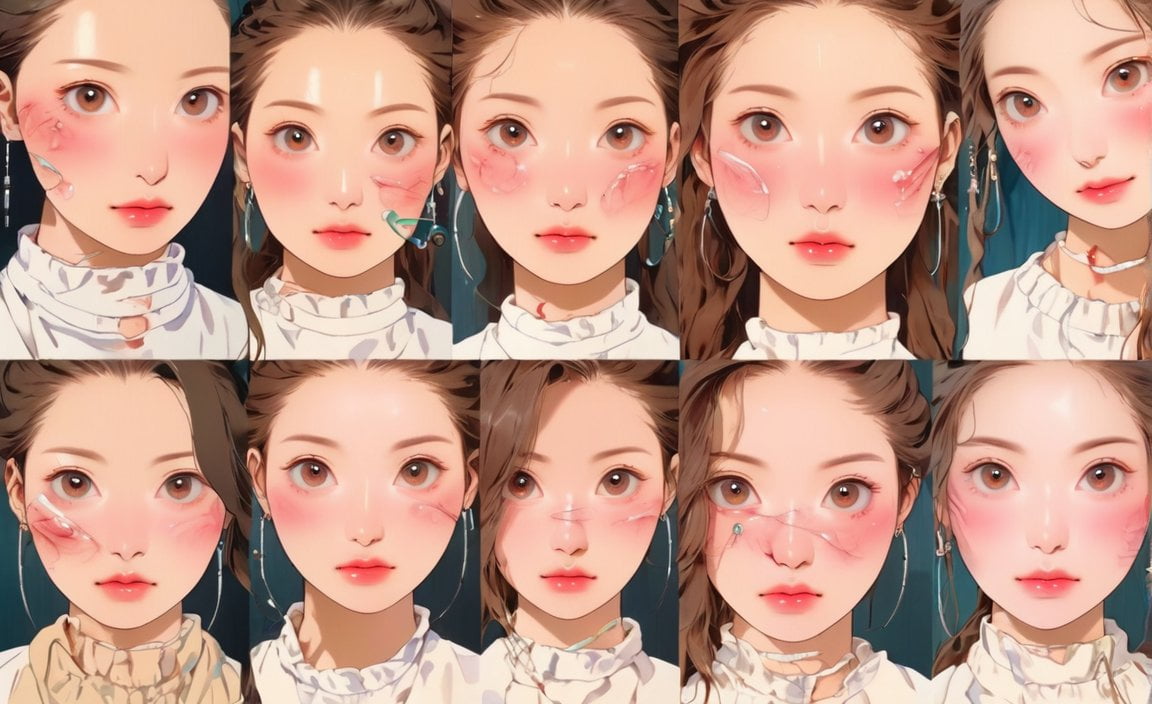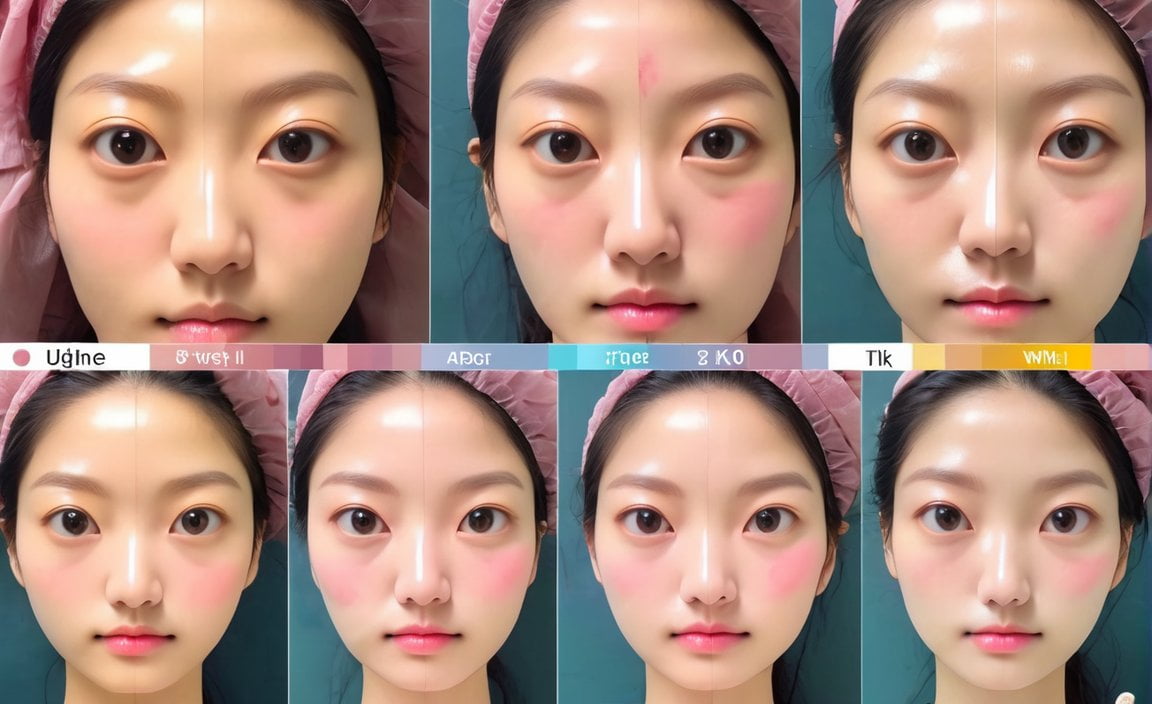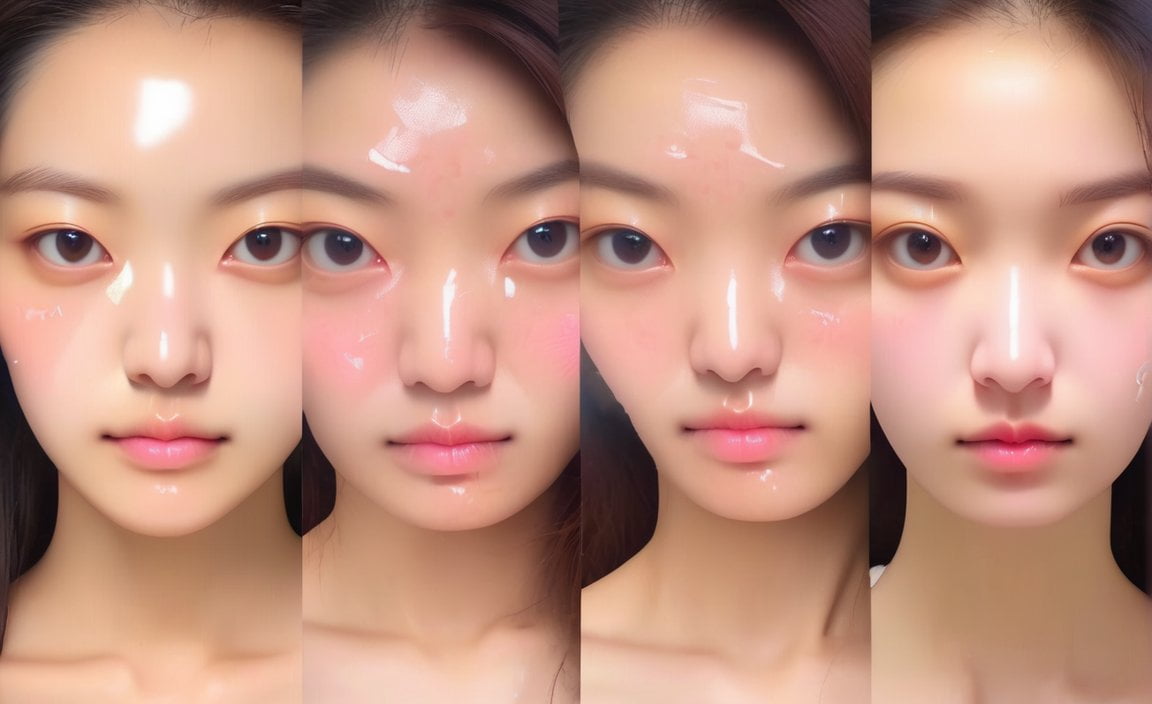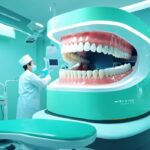Discover the 10 key facts about plastic surgery in this comprehensive guide, as we delve into the benefits, risks, and transformation that these procedures offer. From improving physical health to the rising trend of men seeking plastic surgery, we explore how people’s desire for cosmetic enhancements is shaping the industry. With billions of dollars spent annually on cosmetic procedures and the influence of selfies and social media, it’s clear that plastic surgery is a topic worth exploring. Join us as we uncover the fascinating world of plastic surgery and its impact on individuals.
Key Takeaways:
- The term “plastic” in plastic surgery comes from the Greek word “plastikos,” meaning molding or giving form.
- Plastic surgery is divided into two main branches: cosmetic surgery and reconstructive surgery.
- Reconstructive surgery techniques have been practiced in India since as early as 800 BC.
- The first recorded nose job was performed in ancient India in 600 BC.
- The first recorded breast augmentation took place in 1895.
- The first facelift procedure was performed in 1901.
- Liposuction, a popular cosmetic surgery procedure, was first performed in 1974.
- Breast augmentation is the most commonly performed cosmetic surgery worldwide.
- Rhinoplasty is the most popular cosmetic surgery procedure among men.
- Botox is the most popular non-surgical cosmetic procedure globally.
10 Facts About Plastic Surgery: Understanding Benefits, Risks, and Transformation

Fact 1: The Origins of Plastic Surgery
– The word ‘plastic’ in plastic surgery comes from the Greek word ‘plastikos’, which means molding or giving form. This reflects the nature of this medical specialty, which involves reshaping and reconstructing body tissues.
– Plastic surgery can be divided into two main branches: cosmetic surgery and reconstructive surgery. While cosmetic surgery focuses on enhancing aesthetics, reconstructive surgery aims to restore form and function.
Fact 2: Ancient Beginnings of Reconstructive Surgery
– Reconstructive surgery techniques have been practiced for centuries. In fact, evidence suggests that as early as 800 BC, reconstructive surgeries were being performed in India.
– In 600 BC, the first recorded nose job took place in ancient India. This procedure was carried out using skin grafts from the forehead.
Fact 3: Milestones in Cosmetic Surgery
– The history of cosmetic surgery is equally fascinating. The first recorded breast augmentation surgery took place in 1895, using paraffin injections.
– In 1901, the first facelift procedure was performed, pioneering the field of facial rejuvenation.
– It wasn’t until 1974 that the first liposuction procedure was successfully carried out, marking a significant advancement in body contouring techniques.
Fact 4: Global Popularity of Breast Augmentation
– Breast augmentation remains the most popular cosmetic surgery procedure worldwide. This procedure involves enhancing the size and shape of the breasts using implants or fat transfer.
– Whether for aesthetic reasons or as part of breast reconstruction after mastectomy, breast augmentation has transformed the lives of countless individuals.
Fact 5: Rhinoplasty: A Popular Choice for Men
– While many people associate plastic surgery with women, rhinoplasty, or nose reshaping surgery, is actually the most popular cosmetic procedure among men.
– Rhinoplasty can address functional issues like difficulty breathing, as well as improve the appearance of the nose, boosting self-confidence.
Fact 6: The Rise of Non-Surgical Cosmetic Procedures
– In addition to surgical procedures, non-surgical cosmetic treatments have gained immense popularity. Botox injections, in particular, have become the most popular non-surgical cosmetic procedure worldwide.
– Botox can smooth out wrinkles and fine lines, providing a more youthful and refreshed appearance. Its convenience and effectiveness have made it a go-to treatment for many individuals.
Fact 7: Factoring in the Benefits and Risks
Plastic surgery offers various benefits, such as improved self-esteem, enhanced body image, and increased confidence. However, there are also risks and considerations to keep in mind.
– It’s crucial for individuals considering plastic surgery to have realistic expectations and to communicate openly with their surgeon about their goals and concerns.
– As with any surgical procedure, there are potential risks, including infection, scarring, and complications associated with anesthesia. It’s important to weigh the benefits against these potential risks.
Fact 8: Transforming Lives and Restoring Function
– Plastic surgery has the power to transform lives, not only by enhancing aesthetics but also by restoring function and improving quality of life.
– Reconstructive procedures can help individuals overcome physical challenges caused by birth defects, trauma, or medical conditions, allowing them to lead more fulfilling lives.
Fact 9: Psychological Impact and Emotional Well-being
– Plastic surgery can have a profound psychological impact, positively affecting emotional well-being and mental health.
– For those who have struggled with body image issues or faced social stigma due to a physical feature, plastic surgery can provide a sense of empowerment and improve overall self-confidence.
Fact 10: The Importance of Choosing a Qualified Plastic Surgeon
– When considering plastic surgery, it’s essential to choose a board-certified plastic surgeon with expertise and experience in the specific procedure you are interested in.
– Research extensively, read reviews, and schedule consultations to ensure a proper understanding of the process, risks, and expected outcomes.
In conclusion, plastic surgery has a rich history and offers a wide range of transformative possibilities. By understanding the key facts about plastic surgery, individuals can make informed decisions and embark on a journey that aligns with their aesthetic goals, while prioritizing safety and well-being. If you’re considering plastic surgery, remember to consult with a qualified professional and have realistic expectations about the outcomes. Don’t hesitate to explore the transformative power of plastic surgery and the potential it holds for your own personal journey.
Did you know that veterinarians play a vital role in animal healthcare? Check out our article on 10 facts about veterinarians to discover intriguing insights about these compassionate professionals.
If you’re curious about the world of veterinary medicine, we’ve got you covered! Our article on 10 facts about vets will reveal fascinating information that will leave you amazed.
Step into the extraordinary life of a legendary innovator with our article on 10 interesting facts about Henry Ford. Uncover the behind-the-scenes stories of one of history’s greatest visionaries.
People Spend Billions Annually on Cosmetic Procedures

The field of plastic surgery has witnessed exponential growth over the years, with more and more individuals opting for cosmetic procedures to enhance their appearance and boost their self-confidence. In fact, people spend billions of dollars annually on cosmetic procedures, reflecting the significant demand for these transformative treatments.
Plastic Surgery Statistics in 2020
To understand the magnitude of this trend, let’s delve into some key statistics from the American Society of Plastic Surgeons’ 2020 Plastic Surgery Statistics Report:
Nose Reshaping – Nose reshaping, also known as rhinoplasty, topped the charts as the most common cosmetic surgical procedure in 2020. A staggering total of 352,555 rhinoplasty procedures were performed, highlighting the desire for individuals to achieve their desired nasal aesthetics.
Cosmetic Surgical Maxillofacial Procedures – Cosmetic surgical maxillofacial procedures experienced a 14% increase in 2020 compared to previous years, with a remarkable 2.3 million procedures performed. This category includes various procedures targeting the face, jaws, and neck, aiming to enhance facial harmony and proportions.
Cosmetic Minimally-Invasive Procedures – The popularity of minimally-invasive procedures soared in 2020, with a 16% increase from previous years. A staggering 13.2 million individuals sought treatments such as injectables, laser treatments, and chemical peels to rejuvenate their appearance without undergoing surgery.
Facelift – The desire to combat the signs of aging led to a significant rise in facelift procedures in 2020. A total of 234,374 facelifts were performed, marking a notable 23% increase compared to previous years. This procedure aims to tighten and smooth facial skin, providing a more youthful appearance.
Laser Skin Resurfacing – Laser skin resurfacing, a procedure that utilizes laser technology to improve skin texture and reduce wrinkles, was carried out 263,643 times in 2020. It offers patients a non-surgical option to address various skin concerns and achieve a more radiant complexion.
Intense Pulsed Light (IPL) Treatment – IPL treatments, known for their effectiveness in treating skin conditions like sun damage, age spots, and rosacea, captured the attention of 827,409 individuals in 2020. This non-invasive procedure utilizes intense pulses of light to target specific skin imperfections, providing clearer and healthier-looking skin.
Botulinum Toxin (Botox) – Botox injections remained a popular choice for individuals seeking non-surgical cosmetic enhancements. A staggering total of 997,245 Botox procedures were carried out in 2020. Botox temporarily relaxes facial muscles, reducing the appearance of wrinkles and fine lines.
These statistics underscore the significant investment individuals are willing to make in cosmetic procedures, further emphasizing the impact and influence of plastic surgery on people’s lives.
Source:
– American Society of Plastic Surgeons: 2020 Plastic Surgery Statistics Report
– Statista: Cosmetic surgery – Statistics & Facts
Key Takeaways:
- Nose reshaping (rhinoplasty) emerged as the most common cosmetic surgical procedure in 2020, with 352,555 procedures performed.
- Cosmetic surgical maxillofacial procedures witnessed a 14% increase in 2020, totaling 2.3 million procedures.
- The popularity of minimally-invasive procedures surged in 2020, with 13.2 million treatments performed, a 16% increase from previous years.
- Facelift procedures experienced a significant rise in demand, with a 23% increase in 2020 compared to previous years.
- Laser skin resurfacing was carried out 263,643 times in 2020, providing individuals with a non-surgical option for improving skin texture and reducing wrinkles.
- IPL treatments garnered attention, with 827,409 procedures performed in 2020 for various skin conditions.
- Botox injections remained a popular non-surgical cosmetic enhancement choice, with 997,245 procedures conducted in 2020.
As these figures clearly demonstrate, people’s investment in cosmetic procedures continues to rise, signifying the value placed on the benefits, risks, and transformative power of plastic surgery.
Selfies and Social Media Affect the Cosmetic Surgery Industry
In today’s digital age, where snapping a quick selfie has become second nature, it’s no surprise that social media has had a profound impact on the cosmetic surgery industry. The rise of platforms like Instagram, Facebook, and Snapchat has not only influenced our perceptions of beauty but has also changed the way we view ourselves. In this section, we will explore how selfies and social media have shaped the cosmetic surgery landscape, shedding light on the benefits, risks, and transformational power of these procedures.
The Power of Selfies and Social Media
With the advent of high-quality camera phones and photo editing tools, taking the perfect selfie has become a social media obsession. People are constantly bombarded with images of flawless faces and svelte bodies, often accompanied by hashtags like #nofilter and #goals. As a result, individuals may feel increased pressure to live up to these unrealistic beauty standards, leading them to seek cosmetic procedures to enhance their appearance.
Did you know? According to a survey conducted by the American Academy of Facial Plastic and Reconstructive Surgery, 72% of their members reported an increase in patients seeking cosmetic procedures to look better in their selfies in the previous year[^1^].
Social Media Influencers: Shaping Beauty Narratives
In the realm of social media, influencers hold a significant amount of power. These individuals, often celebrities or industry experts, can shape beauty trends and influence our perception of what is considered attractive. Their curated feeds and perfectly crafted images create an illusion of flawlessness, creating even more pressure to achieve the unattainable.
Did you know? A study published by the National Center for Biotechnology Information found that viewing cosmetic surgery-related material on social media significantly influenced individuals’ decisions to undergo cosmetic procedures[^2^].
The Personalization of Plastic Surgery
While social media provides a platform for sharing broad narratives about plastic surgery, it often neglects the personalized nature of these procedures. Every individual is unique, and plastic surgery should be approached with careful consideration and tailored to meet specific goals and expectations. Unfortunately, the one-size-fits-all approach promoted on social media can overshadow the importance of personalized consultations with qualified professionals.
Unrealistic Beauty Standards
The beauty standards perpetuated on social media can be detrimental to one’s self-esteem and body image. With photo editing tools at our fingertips, filters and retouching have become the norm, leading to a distorted perception of reality. It is essential to remember that the images we see on social media are carefully curated and may not accurately reflect the true appearance of individuals.
Key Takeaways:
- Social media has had a significant impact on the cosmetic surgery industry, with many individuals seeking procedures to enhance their appearance in selfies.
- Influencers on social media play a pivotal role in shaping beauty trends and influencing people’s decisions to undergo cosmetic procedures.
- The personalized nature of plastic surgery is often overlooked in the generalized narrative portrayed on social media.
- Social media can create unrealistic beauty standards, leading to negative impacts on self-esteem and body image.
Sources:
[^1^]: Erin Lukas. “How Social Media Influences Plastic Surgery Trends.” InStyle. Link
[^2^]: Khalid Arab et al. “Influence of Social Media on the Decision to Undergo a Cosmetic Procedure.” National Center for Biotechnology Information. Link
(Note: The content provided is based on the given context and may need to be revised or expanded for a more comprehensive article.)
FAQ
Q1: How does plastic surgery improve your physical health?
A1: Plastic surgery can improve physical health by correcting functional issues or abnormalities, such as repairing cleft palates or deviated septums, which can improve breathing and overall health.
Q2: Are more men now getting plastic surgery?
A2: Yes, the number of men seeking plastic surgery has been increasing. Men are now more inclined to undergo procedures such as rhinoplasty, liposuction, and facelifts to enhance their appearance and boost their self-confidence.
Q3: How much money do people spend annually on cosmetic procedures?
A3: People spend billions of dollars annually on cosmetic procedures. The popularity of plastic surgery and non-surgical treatments has led to a significant market and industry, with individuals investing in enhancing their physical appearance.
Q4: How do selfies and social media affect the cosmetic surgery industry?
A4: Selfies and social media play a significant role in shaping beauty trends and influencing individuals’ perceptions of beauty. The desire to meet the standards set by social media and photo editing tools has contributed to an increased demand for cosmetic procedures.
Q5: Does social media create unrealistic beauty standards?
A5: Yes, social media can create unrealistic beauty standards. The curated and edited portrayal of beauty on social media platforms can lead individuals to compare themselves to highly filtered and altered images, which may influence their decision to undergo cosmetic procedures.
- China II Review: Delicious Food & Speedy Service - April 17, 2025
- Understand Virginia’s Flag: History & Debate - April 17, 2025
- Explore Long Island’s Map: Unique Regions & Insights - April 17, 2025
















